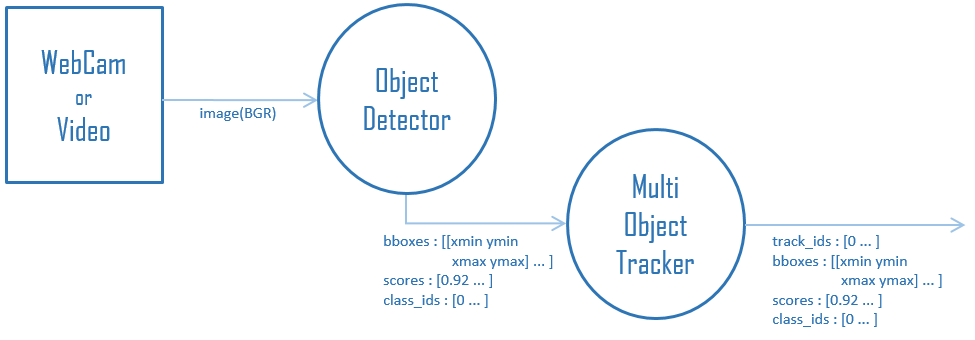Framework for the Complete Gaze Tracking Pipeline
The figure below shows a general representation of the camera-to-screen gaze tracking pipeline [1]. The webcam image is preprocessed to create a normalized image of the eyes and face, from left to right. These images are fed into a model, which predicts the 3D gaze vector. The predicted gaze vector can be projected onto the screen once the user’s head pose is known.
This framework allows for the implementation of a real-time approach to predict the viewing position on the screen based only on the input image.
pip install -r requirements.txt- If necessary, calibrate the camera using the provided interactive script
python calibrate_camera.py, see Camera Calibration by OpenCV. - For higher accuracy, it is also advisable to calibrate the position of the screen as described by Takahashiet al., which provide an OpenCV and matlab implementation.
- To make reliable predictions, the proposed model needs to be specially calibration for each user. A software is provided to collect this calibration data.
- Train a model or download a pretrained model.
- If all previous steps are fulfilled,
python main.py --calibration_matrix_path=./calibration_matrix.yaml --model_path=./p00.ckptcan be executed and a "red laser pointer" should be visible on the screen.main.pyalso provides multiple visualization options like:--visualize_preprocessingto visualize the preprocessed images--visualize_laser_pointerto show the gaze point the person is looking at on the screen like a red laserpointer dot, see the right monitor on the image below--visualize_3dto visualize the head, the screen, and the gaze vector in a 3D scene, see left monitor on the image below
[1] Amogh Gudi, Xin Li, and Jan van Gemert, “Efficiency in real-time webcam gaze tracking”, in Computer Vision - ECCV 2020 Workshops - Glasgow, UK, August 23-28, 2020, Proceedings, Part I, Adrien Bartoli and Andrea Fusiello, Eds., ser. Lecture Notes in Computer Science, vol. 12535, Springer, 2020, pp. 529–543. DOI : 10.1007/978-3-030-66415-2_34. [Online]. Available: https://doi.org/10.1007/978-3-030-66415-2_34.










